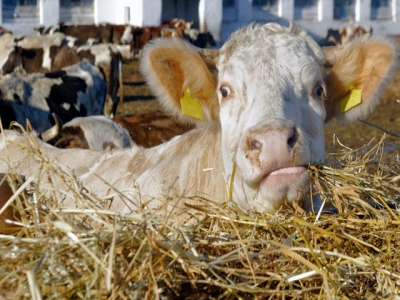Winter feed costs dependent on forage prices

Beef producers will soon spend a lot on hay and supplement, but just how much can vary and depends on many moving factors, according to two University of Missouri Extension specialists.
Good management practices remain key to beef herd profitability.
Agricultural business specialist Brent Carpenter and livestock specialist Gene Schmitz looked at how current prices affect winter feeding costs for several different diets.
“Winter feeding is a critical time for herd health and production. It’s also the most expensive time on the cow calendar,” Schmitz said.
Carpenter added that grass hay prices dropped only slightly from last winter following a drought. Although the U.S. Department of Agriculture has reported strong production in 2019, hay stocks at the start of harvest season were the lowest in 35 years, he said, noting that, heading into the winter feeding season, prices remain 25-30% higher than two years ago.
The team compared the cost of hay and supplement for spring- and fall-calving cows and found that the difference in daily cost with current prices is about a dime per day. Spring-calving cows are in late gestation and dry most of the hay feeding season. Fall-calving cows are in mid- to late lactation during winter.
Without laboratory testing, grass hay quality is difficult to establish, Schmitz said. No grading system exists for grass hay, so the specialists assigned “poor, fair and good” grades based on crude protein and energy content. Similarly, hay prices are quoted by rough quality grade.
Carpenter and Schmitz considered multiple feed mixes to meet the cow’s nutritional needs and estimated costs at about 8 cents/lb. for delivered feed in central Missouri.
The cost of raised hay was set at $62 per ton, based on University of Missouri Extension production budgets. Carpenter said producers who grow their own hay should strive for high quality. The costs per ton to grow poor-quality and high-quality hay are essentially the same.
The realized cost of feeding good-quality raised hay is about 59 cents less than comparable purchased hay. Feeding poor-quality raised hay actually cost the producer about 16 cents more each day than buying comparable hay. This difference is even higher in years of surplus hay supplies, Carpenter said.
Using current market prices, producers who buy hay save about 64 cents per cow per day by feeding the low-priced, low-quality hay, even though it requires a higher level of supplementation.
Carpenter said he knows the “cheap hay” calculation flies in the face of traditional cattle and forage wisdom, “but that is how the math works. The idea is not to feed junk but to keep hay costs low, even if it means spending more on supplement.”
Good management practices remain key to profitability. “Hay expense, not supplement, is the main driver of winter feeding costs and potentially the profitability of the enterprise,” Schmitz said. “Management practices can have a large impact on the number of days on hay and overall winter feeding costs.”
Related news
 3D technology helps dairy farmers identify sick cows
3D technology helps dairy farmers identify sick cows Current precision livestock farming applications for managing dairy cow health are often slow in identifying diseases.
 Clay has multiple benefits as dairy cattle feed supplement
Clay has multiple benefits as dairy cattle feed supplement Clay supplements may improve feedstuff degradability in dairy cattle diets.
 Asia Coffee-Vietnam dull as holiday mood drags, Indonesia subdued
Asia Coffee-Vietnam dull as holiday mood drags, Indonesia subdued Trade in Asian coffee markets in Vietnam was sluggish amid post-holiday sentiment, while stocks in Indonesia remained low, traders said on Thursday.